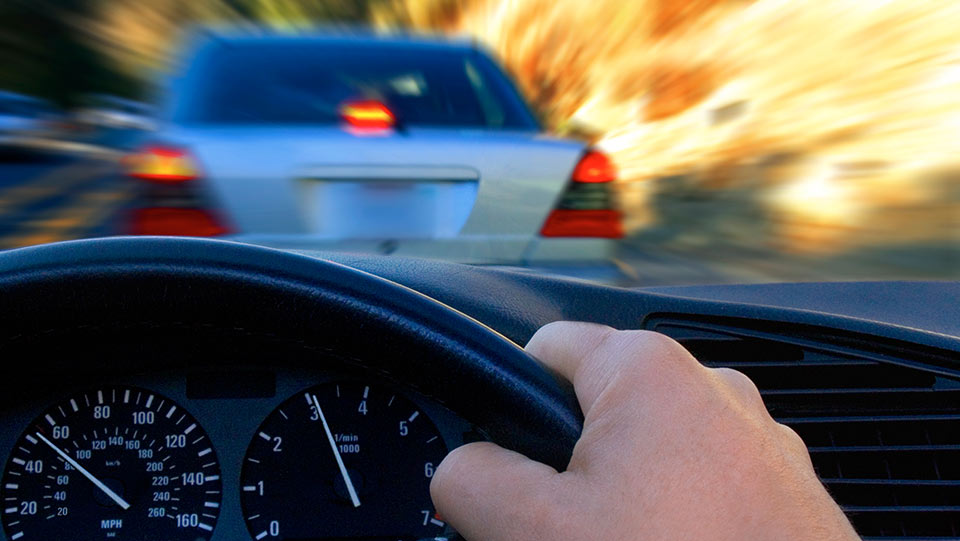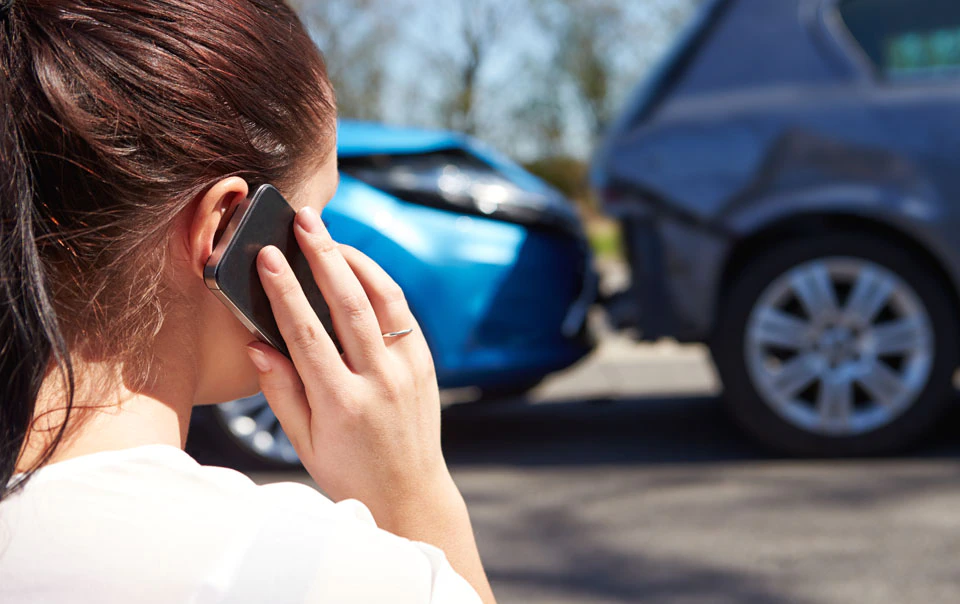Tips for Handling a Tire Blowout


Experiencing a tire blowout while you’re driving can be a scary and potentially dangerous situation. To be able to respond appropriately, you’ll need to know what to do, because when a tire blows out, it can take just a fraction of a second before your vehicle suddenly becomes a struggle to control. How you react can make all the difference in how the situation resolves itself.
The first step is staying calm and remembering some tips that can help you maintain control of your vehicle. You’ll want to know what a tire blowout sounds like and feels like, and how to drive through it.
What does a tire blowout sound like?
If you experience a tire blowout, there typically are three key sounds you can hear. They can vary depending on your situation, but at first, you may hear a loud boom or bang of the tire popping; this sound typically reverberates throughout your car. Then, you may hear a whooshing sound or the sound of the air quickly discharging from the tire. Finally, you may hear a repeated flapping or flopping of the deflated tire hitting the road.
What does a tire blowout feel like?
If a front tire bursts, you should feel the force mostly within the steering of your vehicle. With a rear tire, you should feel it more in the seat or body of the car. Whether the blowout occurred in the front or back, your response should be the same.
How to drive through a tire blowout
Be sure to stay calm. Focus on keeping your vehicle balanced and controllable – that’s the goal to help you stay safe. Here are some important tips and best practices from the National Highway Traffic Safety Administration (NHTSA)1 if you experience a tire blowout:
- Keep a firm grip on the steering wheel with both hands.
- Do not slam on the brakes.
- Gradually release the accelerator to gradually slow down your car.
- Adjust your steering as needed to help stabilize your vehicle and regain control. Steer in the direction of where you want the vehicle to go.
- Pull your car over to the side of the road once you have slowed to a safe speed.
- Activate your emergency flashers.
What to do after a tire blowout
After a blowout, be sure that you are safely off the road and out of harm’s way before you exit your vehicle. Turn on your emergency flashers to alert other drivers, and if safe to do so, put out reflective cones or triangles if you have them. If it is not safe to change the tire where you are, or you are unsure how, call for roadside assistance.
Also keep in mind that a spare is only recommended for emergencies and should not be driven for long distances or at high speeds. Take the time now to read your owner’s manual to learn where your spare tire and necessary tools are located. Your vehicle’s owner manual may also provide instructions on how to change a flat tire. It’s a good idea to be familiar with these procedures before you get stuck on the side of the road.
How to prevent a tire blowout
The good news is that many tire blowouts are preventable with some advance attention. Typically, most tire blowouts occur from May through October, when the road surface is the hottest, and from contributing factors such as an underinflated tire, excessively worn treads or an overloaded vehicle.2 It’s important to do a routine inspection of your tires to check for slow leaks, wear and tear and proper pressure. Keeping your carload light, within your vehicle manufacturer’s recommendations (found in the same spot as the recommended tire pressure), can help, too.3
Learn more about what to do if your car breaks down and other steps to help stay safe on the roads.
Talk to a local independent agent or get a car insurance quote online to create a policy that best addresses your needs. Learn more about car insurance from Travelers.
Sources



